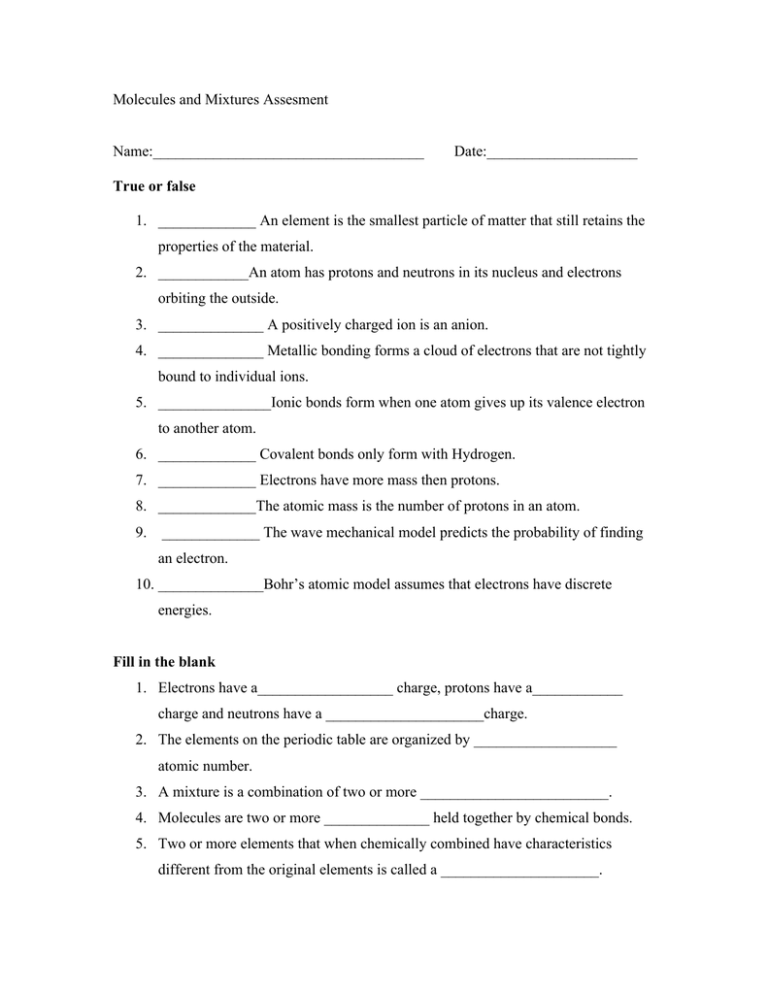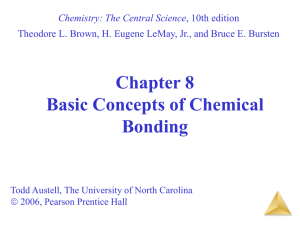Molecules and Mixtures Assesment
advertisement

Molecules and Mixtures Assesment Name:____________________________________ Date:____________________ True or false 1. _____________ An element is the smallest particle of matter that still retains the properties of the material. 2. ____________An atom has protons and neutrons in its nucleus and electrons orbiting the outside. 3. ______________ A positively charged ion is an anion. 4. ______________ Metallic bonding forms a cloud of electrons that are not tightly bound to individual ions. 5. _______________Ionic bonds form when one atom gives up its valence electron to another atom. 6. _____________ Covalent bonds only form with Hydrogen. 7. _____________ Electrons have more mass then protons. 8. _____________The atomic mass is the number of protons in an atom. 9. _____________ The wave mechanical model predicts the probability of finding an electron. 10. ______________Bohr’s atomic model assumes that electrons have discrete energies. Fill in the blank 1. Electrons have a__________________ charge, protons have a____________ charge and neutrons have a _____________________charge. 2. The elements on the periodic table are organized by ___________________ atomic number. 3. A mixture is a combination of two or more _________________________. 4. Molecules are two or more ______________ held together by chemical bonds. 5. Two or more elements that when chemically combined have characteristics different from the original elements is called a _____________________. A B B Use the words below to label the diagram above. Long range attraction Short range repulsion Bond energy Using the diagram above, estimate whether this bond will have a high or low boiling point and whether it will have a large or small thermal expansion. Short answer questions 1. Draw a diagram of Bohr’s Model of the atom. Make sure you label the parts and name the element. What are the assumptions Bohr made in developing his model? 2. Draw a diagram of the wave mechanical model of the atom. Include both the S and P orbitals. Add 7 electrons and name the element. What are the assumptions used to develop the wave-mechanical model? 3. How does the wave mechanical model predict the shape of a covalently bonded molecule? (You can draw a picture if it is easier) 4. Why are electrons so important? 5. A cation is a positively charged ion. Why does losing an electron make the ion take on a positive charge? 6. Explain how ionic bonds are different from covalent bonds. 7. Describe the characteristics of an ionicly bonded compound.








